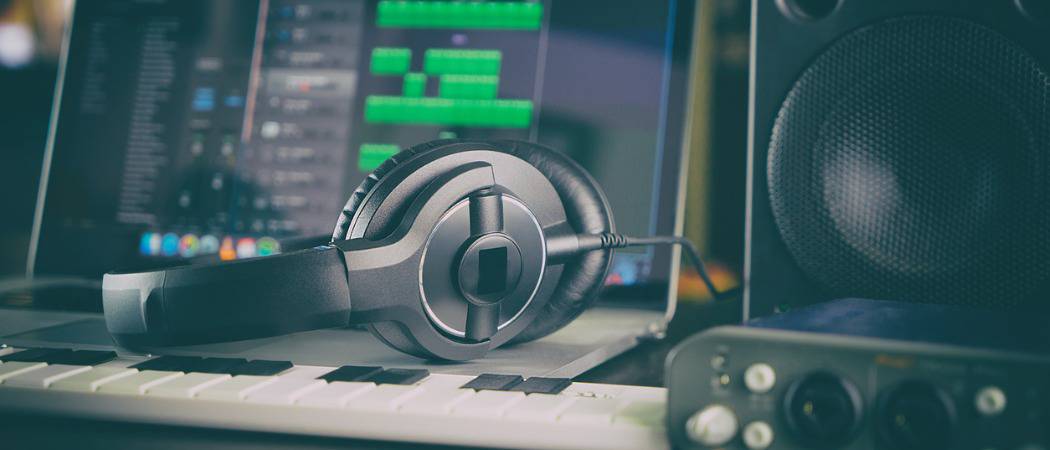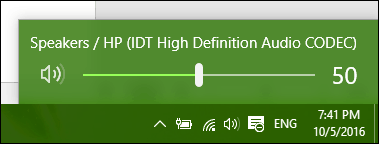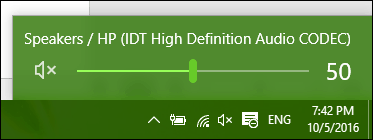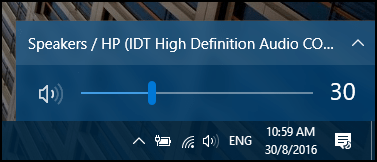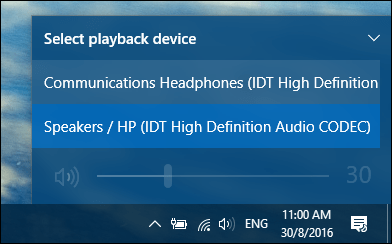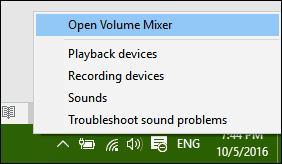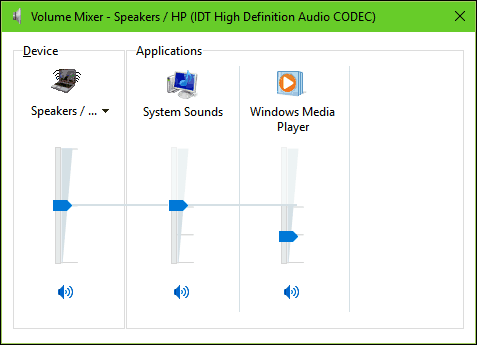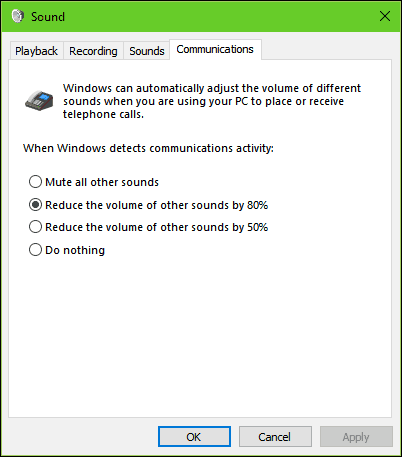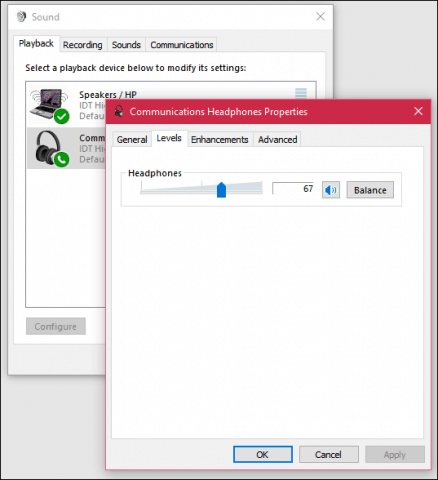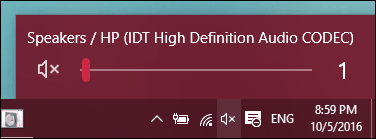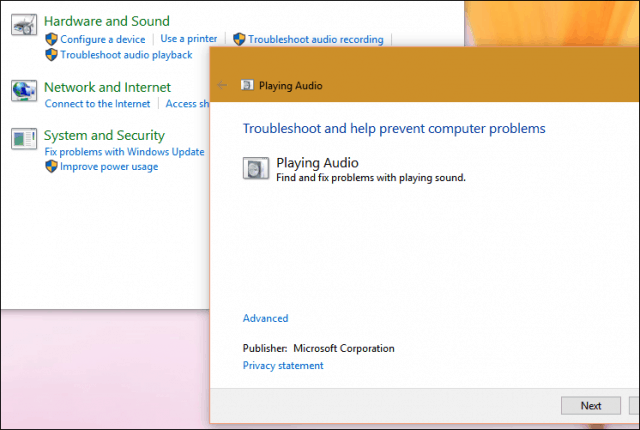Update: If you are looking for a quality alternative sound app that adds extra features, check out the Ear Trumpet App.
Adjust Volume and Audio Settings in Windows 10
Basic audio settings can be accessed from the Speakers notification on the taskbar. You can use the slider to increase or lower the volume.
Audio can mute audio by clicking the speaker icon on the new volume menu.
The Windows 10 Anniversary Update now makes it easier to switch between different audio devices. To do so, click the audio icon in the Notification Area.
Click the audio output device you would like to use. This is especially handy if you want to switch between built-in audio or your headphones.
Additional audio options can be accessed from a right-click menu.
The Volume Mixer provides options for managing volume per desktop application. Not all applications support this feature, though. If they do, you’ll see them in the Mixer and can adjust the volume levels. For example, you might want to mute specific applications such as system sounds when watching a movie.
A handy function of the Windows sound settings is the ability to modify audio behavior when multi-tasking. If you use a smartphone, you might be aware of an option that lowers the audio of the active application when you receive a notification. If you use an application such as Skype to send and receive video calls, Windows can automatically adjust the volume when communication activity is detected.
Connected external audio devices such as speakers or headphones can be modified from the Sound Settings playback options. Enhancements such as bass, loudness, and surround sound quality can be applied.
Troubleshooting Audio In Windows 10
If you’re unable to hear audio, there are some things you can try. First, check if the volume is turned down or muted.
If you have recently upgraded to Windows 10, your previous audio driver might not be compatible. Uninstalling and reinstalling your audio device might resolve the issue. Press Windows Key + X and click Device Manager. Then expand Sound > video and game controller. Select your audio device, right-click it and Uninstall. Please restart your computer and let Windows redetect it. You can also check Windows Update for the latest drivers for your sound card.
If the problem persists, try running the Troubleshooting audio playback to fix it.
Check out our other articles about managing audio:
How to Turn Off or Change Windows 10 Notification SoundsSilence Smartphone Notifications from Interrupting Your MusicSwitch between Speakers and Headphones in 1 ClickEarTrumpet for Windows 10 Makes Using Audio Controls a Snap
Make sure recording items are also correctly selected. Be sure that whatever means of listening you have whether headset, built in or external speakers you use are actually turned on, plugged in etc if that is required. Also, it never hurts to simply reboot your computer either at the beginning or if nothing else works. Make sure all your updates are done and current. It is quite amazing as how a simple reboot often will solve issues. Remember — Its a Computer! I tried a quick search on the internet and did not find this specific problem and have not experienced it myself so let the group know if you find a solution, from where and what the solution is please. I set my system sounds lower than all others by accessing setting and the advanced app volume and device services settings but each time I reboot my PC I have to reset it. Is there anyway to make Windows 10 (latest version) actually save and remember these settings between sessions please? Comment Name * Email *
Δ Save my name and email and send me emails as new comments are made to this post.
![]()
